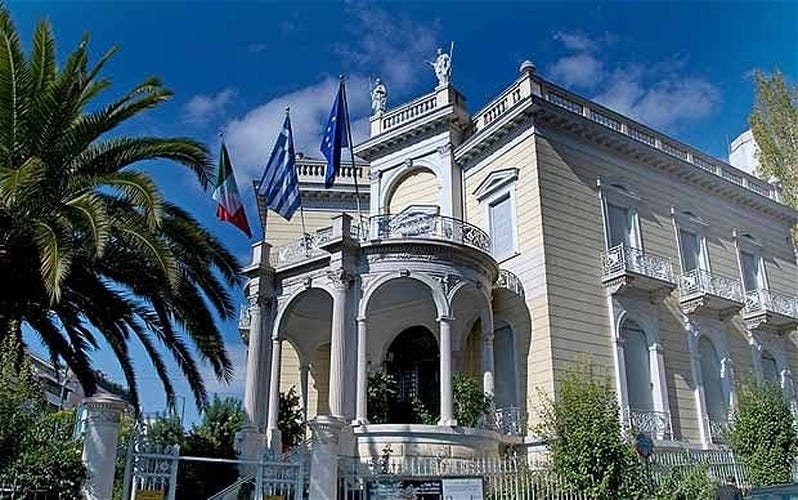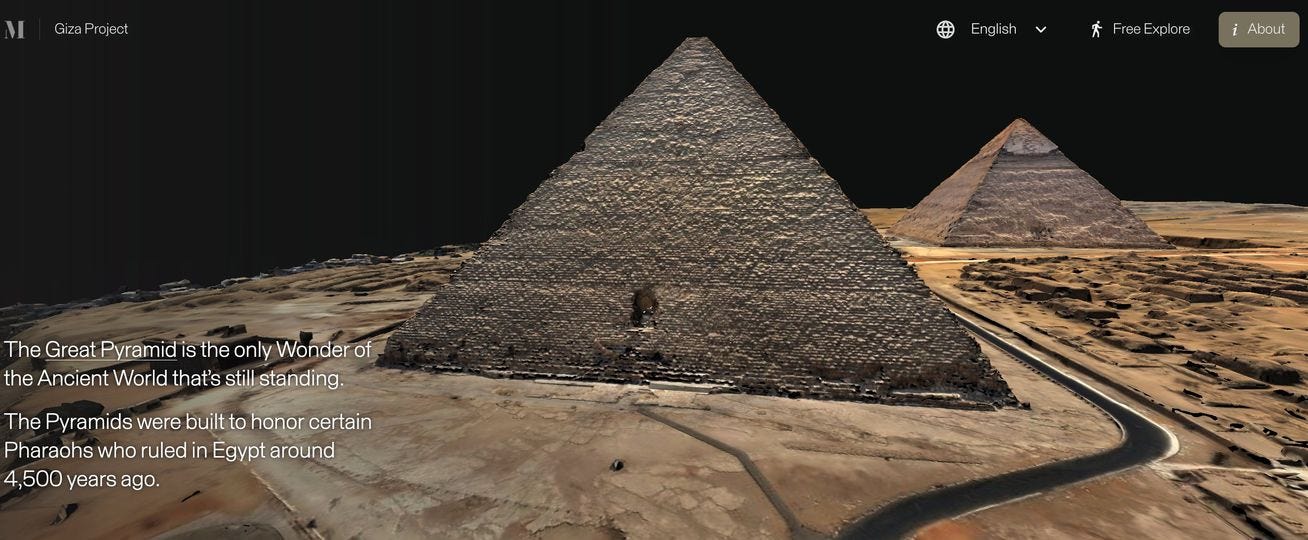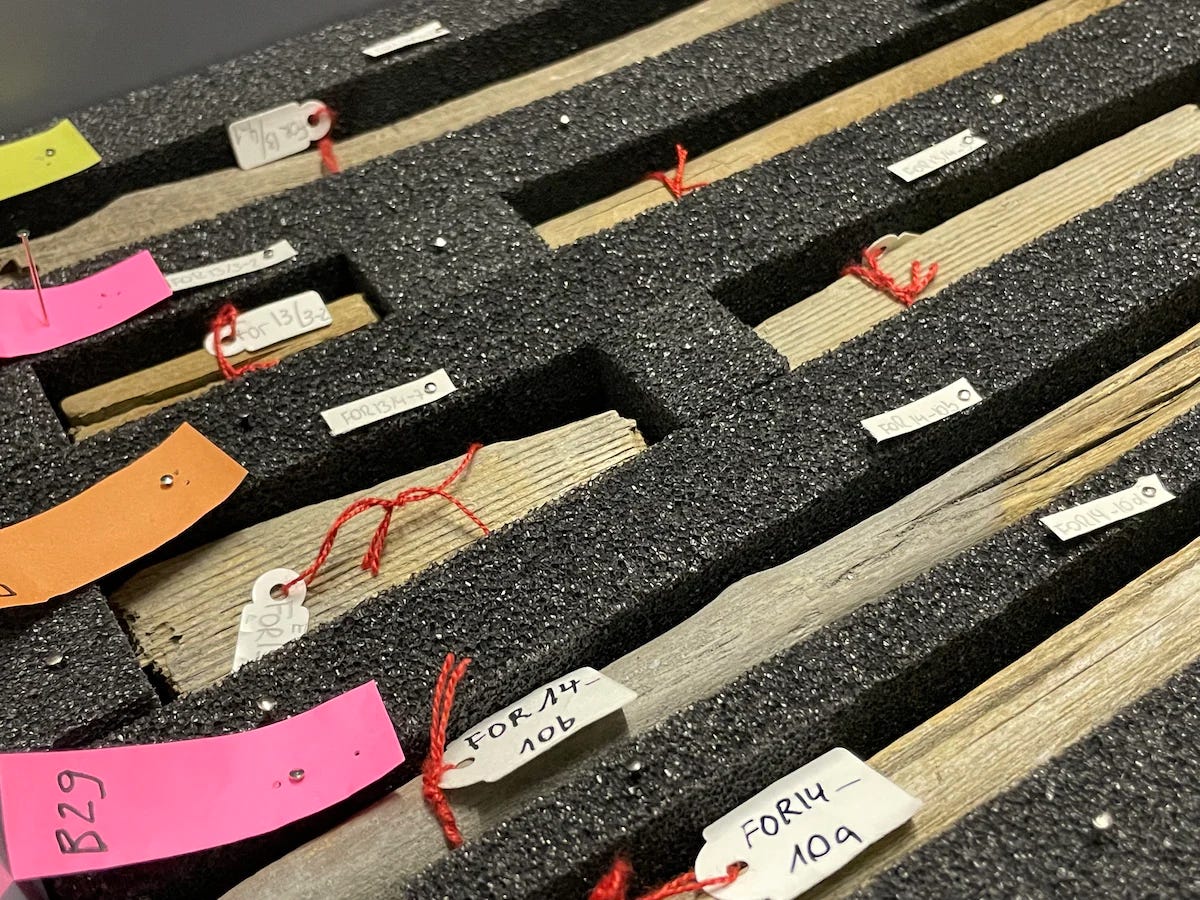Weekly Roundup - November 11th
Tut's glass, the Tut Centennial conference, watermelon DNA, melting ice artifacts--some of our favorites from the past week
Transcending Eternity: The Centennial Tutankhamun Conference
Last weekend, ARCE hosted a Tutankhamun centennial conference in Luxor, Egypt. Check out ARCE’s IG post below and their saved story on the conference. Attendees visited the renovated Carter House, attended lectures by many scholars including Dr. Nicholas Reeves and had a grand celebratory reception outside Karnak Temple. Now that the centennial has come and passed—what are everyone’s thoughts on the coverage?
We thought it was great to see that Egyptian colleagues involved in the 1920’s excavation have finally received more of a spotlight (highlighted in our Nov. 4th post), but so much of the stories overall were still very colonial and problematic—like yet another story about what Tut looked like. On that topic, listen to our podcast on body shaming!
Sorry, But This Is Not “Repatriation”
A great opinion piece by Prof. Yannis Hamilakis. If you remember we recently covered the “joint” ownership of the Stern’s Cycladic collection by the MET and the Greek government, which seemingly was a good deal for all involved. Hamilakis, however, disagrees. As he mentions no member of the Greek archaeological and museum community has come out in support, and no specialist on Greek archaeology or heritage anywhere has defended it. The article details the secret, back-room negotiations and the dubious past of the Cycladic Museum in Athens, which has been instrumental in fueling demand for these objects, leading to illegal excavations and other problematic shenanigans.
Jordan was actually just at the museum in September and has this to say:
The collection is amazing! But now knowing the background to the acquisition of many of these objects in a privately held museum, it really makes your rethink the collection. So many of these pieces were looted, removed from their archaeological context…

Museum of the Bible Returns Ancient Gospel Looted From Greek Monastery
Once again, surprise surprise, the Museum of the Bible was in custody of looted material. This time it was an ancient gospel (pictured below) from a Greek Monastery raided during WWI. The MotB has since returned the piece. When will the Museum of the Bible learn?! Or maybe this is just what happens when White Supremacists use Biblical narratives to claim political power over indigenous and Black folk in the United States. As Tess Davis, executive director of the Antiquities Coalition states:
I think the Museum of the Bible is a great example of how not to build a collection, but I do wish other American museums would follow its example when dealing with their own existing problematic collections. In this case, curators saw red flags, they followed where they led, realized the manuscript was stolen, reached out to its rightful owners and voluntarily returned it.
How can a museum with such dubious collecting practices remain open?

Oldest plant genome on record came from a Stone Age watermelon that grew in the Sahara
Did you know the Egyptians grew and ate watermelons? And did you know that if you go to Egypt today you will taste the best melons you’ve ever had? And did you know that the ancient Egyptians actually depicted watermelons in offering scenes?? Well, now researchers have even sequenced the oldest plant genome and identified it as coming from a pre-aridified Sahara watermelon. We wonder—like we really wonder because we love watermelon—what the über original watermelon tasted like. The scientists believe it was harvested for its nutrient-rich seeds, less for its fruit which they surmise would have been quite bitter.

New Virtual Tour of the Great Pyramid
The Giza Project at Harvard University announced a new virtual tour inside the Great Pyramid. This is an extraordinary tool for students and enthusiasts alike—anyone who is not able to go to Egypt or anyone who needs to get their Great Pyramid engineering on. The level of accuracy and detail are incredible! (And no, even with this model, we still don’t know how the Great Pyramid was built, though Kara got two, yes TWO, emails just this week with new hypotheses…)
From Harvard Museums of Ancient Near East’s Facebook:
Take the tour!
https://bit.ly/GizaProjectPyramidTourENG
https://bit.ly/GizaProjectPyramidTourSpanish
Learn more about the The Giza Project at Harvard University, take additional tours, and sign-up to be informed with the latest updates: https://bit.ly/GizaProject.

Glaciers in Yosemite and Africa will disappear by 2050, U.N. warns
Beyond the fact that this is absolutely terrifying, human induced climate change created melting ice that will reveal many archaeological materials with the retreat of glaciers and other frozen layers (think Ötzi). Check out the great video in this post following archaeologists scouring the ice for artifacts.
But archaeological discoveries from melting ice raise a lot of ethical and practical questions. How are archaeologists supposed to deal with such thing? Do we set up emergency archaeology missions to deal with the ice’s retreat? What type of systematic program will have to be in place to recover these objects? And where are they to be displayed?

Glass from the Tomb of Tutankhamun
The Corning Museum of Glass posted a wonderful (and 7 min long!) video about the glass recovered from Tut’s tomb. Tut’s tomb contained thousands of glass artifacts, many of them the most incredible glass pieces constructed during the Late Bronze Age. Glass was a highly traded material at the time, with certain locales in the Levant known for their fine sand—perfect for glass making. There were many glass production sites found at Amarna as well, from which many of Tut’s piece probably derive. Note how Corning scanning has revealed tiny enemies on an image of a footstool from Tut’s throne, a detail previously invisible. Also check out all the breaks and repairs of this precious material. Oh, and the glass eyes of snakes and birds have tiny little pupils painted on them. There are so many extraordinary details in such objects if you take the time to look carefully… Learn more about Egyptian glass here.






